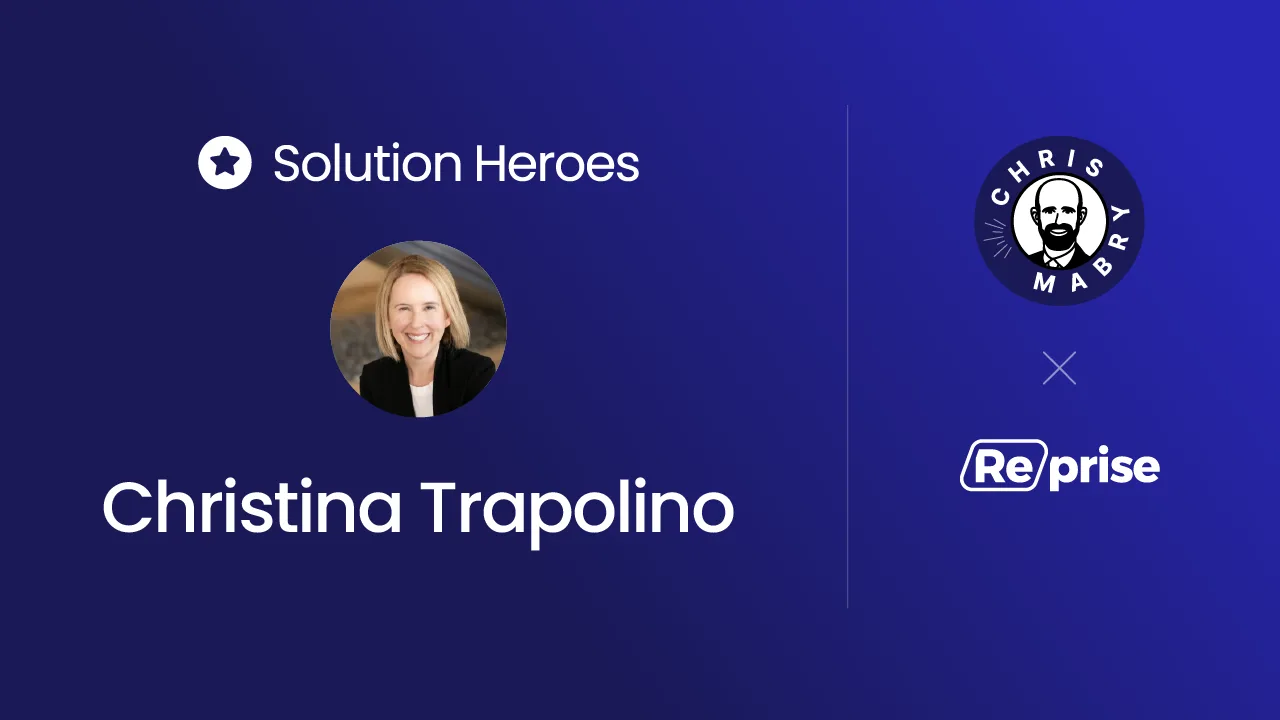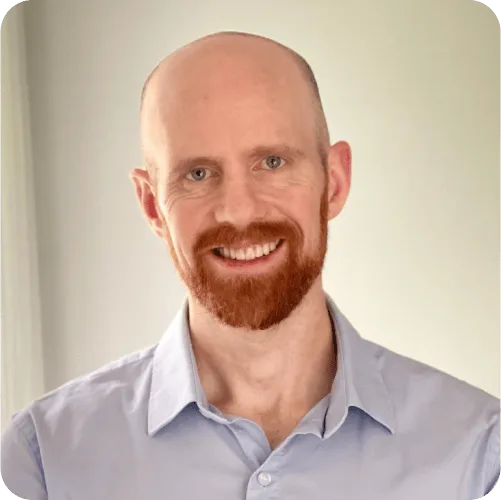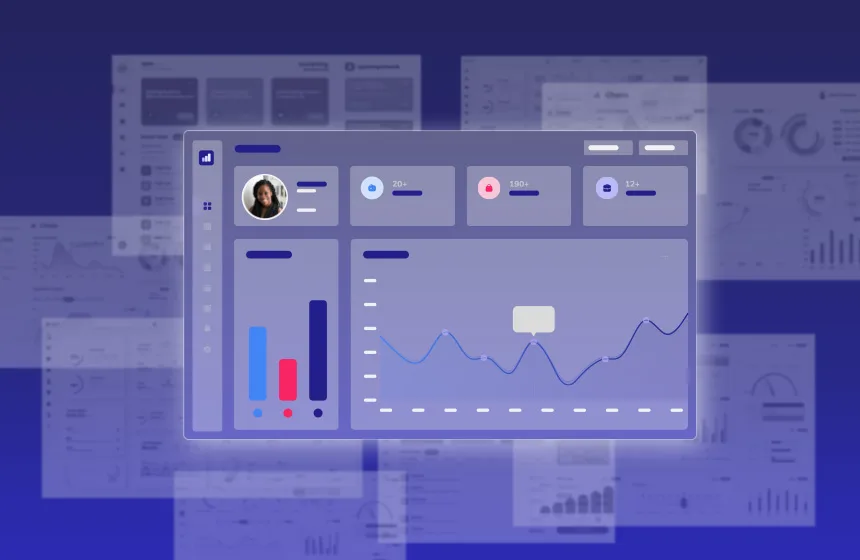Accelerate deals and increase win rates with the leading enterprise AI demo platform.
Solution Heroes: Christina Trapolino on Why AI Won’t Replace Humans in Solutions Engineering

December 19, 2025
Table of Contents
In our Solution Heroes series, I’m sitting down with some of the top leaders pushing the Solutions Engineering (SE) profession forward, with a candid look at what works and what doesn’t. We’re talking wins, lessons learned, and the latest trends impacting our field.
Our guest this month is Christina Trapolino, Director of Field Strategy at Lattice. With a background spanning Solutions, Enablement, and Marketing, Christina brings a sharp and refreshing perspective to what makes the SE profession special and irreplaceable.
In this conversation, we dig into the limitations of AI in presales, what the human side of being a Solutions Engineer actually looks like, and why SEs shouldn’t be afraid of automation if they focus on what machines can’t do.
Becoming an SE: The “Jungle Gym” Career Path
Chris: Christina, you’ve led sales and marketing teams, spent time in professional services, and now you’re leading Field Strategy at Lattice. How did you find your way into presales?
Christina: I did start as a nerd. My dad sold software at IBM and Cisco, so I always had access to a PC. I was into tech from a really early age. I also grew up in online communities like message boards, forums, and poetry groups, and that taught me a lot about how people connect. That really stuck with me.
My career has been a jungle gym. I went from brand-side marketing to consulting, then customer success. When I got into sales engineering, it all clicked. Everything I’d done before came into play. It was like, this is the job I was supposed to have the whole time.
Chris: You’ve said not everyone is cut out to be an SE. Why?
Christina: It’s become popular to say anyone can be an SE. I don’t think that’s true. It’s a weird profile. You’ve got to be just as comfortable behind the camera as in front of it. You’ve got to be okay not winning the Oscar, but still care deeply about making the best show possible.
If you can be an SE, you can probably do just about anything. But that also means this role isn’t for everyone. It’s emotional, intellectual, and chaotic. If you thrive on predictability, this job will eat you alive.
The Lattice Perspective: Who Owns the Demo?
Chris: Lattice is a little different from most companies in the space. How does demo ownership work in your world?
Christina: Lattice is the first place I’ve worked where AEs can demo pretty much everything in the product. It’s not the most technical sale. But there’s a difference between a product demo and what our team does. What the SE team brings is the ability to take everything we know about a customer and turn it into a story — a tailored, proposed solution.
Chris: So it’s not about showing the product, it’s about showing the path?
Christina: Exactly. We might be clicking through screens, but we’re really walking the customer through a vision of what they could be doing. And it’s not just about features. It’s often about rethinking part of their process. That’s the magic. That’s where solutions professionals come in.
Chris: And where do you draw the line on when an SE should be in the room?
Christina: There are moments where we shouldn’t be on the call. That early disco demo? That can be an AE. But once we understand the customer’s problem and see an opportunity to change something, then we’re all in. That’s the point where we shift from presenting to partnering.
The Myth of the “AI Sales Engineer”
Chris: You’ve had some strong reactions to the idea of an “AI Sales Engineer.” What’s your take?
Christina: Stop saying AI Sales Engineer. Just stop. I’ll help you think of something else. Call me. But stop saying that.
Chris: So AI isn’t replacing the SE. But can it support them?
Christina: I think you can help me be a better SE with AI, but I don’t see a world in which a salesperson would feel comfortable with an AI Sales Engineer, much less the buyer. If I’m a seller, do I want a robot on the call with me that’s going to talk to the customer? I don’t think we’re there yet.
Chris: Where do you actually see AI adding value today?
Christina: Right now, it feels low stakes. I trust AI enough to fill out an RFP for me. I trust AI with transcripts — from Gong, for example — and I can say, tell me all of the customer requirements that came out of this call. It’s pretty good. It’s not perfect. Linda — what I call our AI assistant — still needs supervision. But it saves a lot of time.
Chris: What’s the next step for AI in presales?
Christina: The next step is being able to tell the assistant, “Hey, these were the requirements I heard,” and have the model learn from that. That feedback loop — that’s what’s missing right now.
Why the Human Touch Still Matters
Chris: You talk a lot about the gray area in presales. What do you mean by that?
Christina: Our superpower is in the gray area. It’s the one area the business needs us in — and it’s also the hardest thing to teach. You’re interfacing with all the go-to-market teams and all the product teams. And it’s hard to measure. It’s a tough gig, but it’s really fun.
Chris: Let’s talk about demos. Has the SE’s role changed there too?
Christina: There’s a big difference between a demo of a product (which arguably anybody could give, including AI) and a solution conversation. When I say, here’s how I think you should use our product based on your business and your problems, that’s where SEs shine. That’s not a feature walkthrough. That’s consulting.
Chris: What’s something SE leaders often forget?
Christina: We think so much about the buyer experience, which is great. But we sometimes forget how much we’re also empowering the seller. When I handle the solution conversation, it lets the AE focus on closing. That’s a win for everyone.
Chris: You keep a LinkedIn banner that says, “I love humans.” Why?
Christina: I love AI. I love what it can do. But I love humans more. My favorite thing about work — and about tech — is how much we get to interact with other people. Getting in front of somebody and helping them figure out a problem is like my catnip.
Rapid Fire Wrap-Up
Chris: Let’s close with a few quick hits. Favorite movie?
Christina: Lawrence of Arabia. It’s very long. It has an intermission. But I watched it growing up and have loved it my whole life.
Chris: Best industry event you’ve ever attended?
Christina: Anytime there’s something quiet and meaningful. I’m a secret introvert. Put me at a table with a few people and encourage interaction — that’s the kind of event I want.
Chris: Two people everyone in presales should follow on LinkedIn?
Christina: Dr. Julie Gurner. She’s like a real life Wendy Rhoades [from the show Billions]. Just so smart. And David Priemer. He was once an SE and now teaches a science-backed sales methodology. He’s written two great books.
More like this: Check out another Solution Heroes interview: Gregg Aldana on Ushering in a New Era of Solutions Consulting





